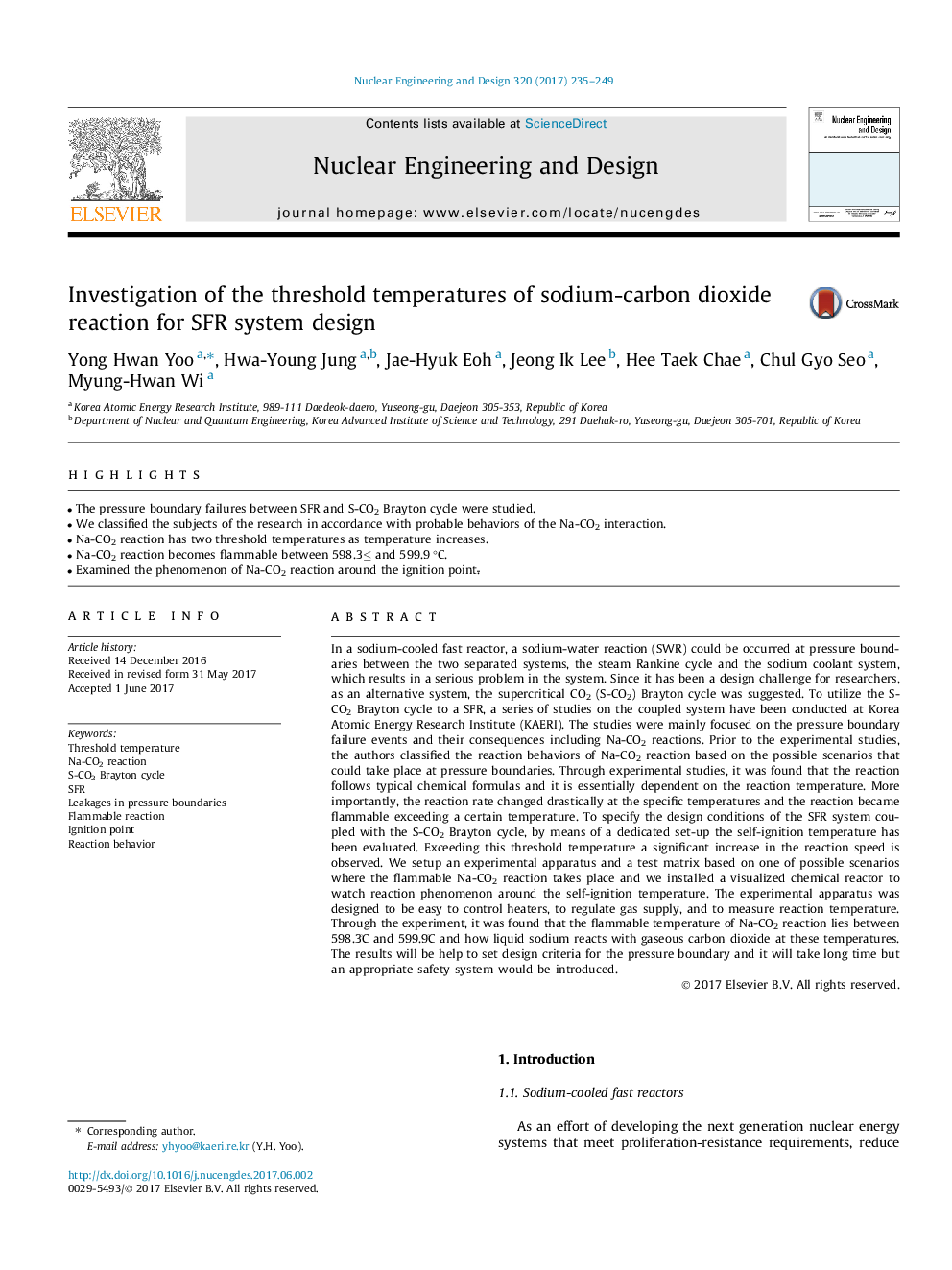| Article ID | Journal | Published Year | Pages | File Type |
|---|---|---|---|---|
| 4925400 | Nuclear Engineering and Design | 2017 | 15 Pages |
Abstract
In a sodium-cooled fast reactor, a sodium-water reaction (SWR) could be occurred at pressure boundaries between the two separated systems, the steam Rankine cycle and the sodium coolant system, which results in a serious problem in the system. Since it has been a design challenge for researchers, as an alternative system, the supercritical CO2 (S-CO2) Brayton cycle was suggested. To utilize the S-CO2 Brayton cycle to a SFR, a series of studies on the coupled system have been conducted at Korea Atomic Energy Research Institute (KAERI). The studies were mainly focused on the pressure boundary failure events and their consequences including Na-CO2 reactions. Prior to the experimental studies, the authors classified the reaction behaviors of Na-CO2 reaction based on the possible scenarios that could take place at pressure boundaries. Through experimental studies, it was found that the reaction follows typical chemical formulas and it is essentially dependent on the reaction temperature. More importantly, the reaction rate changed drastically at the specific temperatures and the reaction became flammable exceeding a certain temperature. To specify the design conditions of the SFR system coupled with the S-CO2 Brayton cycle, by means of a dedicated set-up the self-ignition temperature has been evaluated. Exceeding this threshold temperature a significant increase in the reaction speed is observed. We setup an experimental apparatus and a test matrix based on one of possible scenarios where the flammable Na-CO2 reaction takes place and we installed a visualized chemical reactor to watch reaction phenomenon around the self-ignition temperature. The experimental apparatus was designed to be easy to control heaters, to regulate gas supply, and to measure reaction temperature. Through the experiment, it was found that the flammable temperature of Na-CO2 reaction lies between 598.3ËC and 599.9ËC and how liquid sodium reacts with gaseous carbon dioxide at these temperatures. The results will be help to set design criteria for the pressure boundary and it will take long time but an appropriate safety system would be introduced.
Related Topics
Physical Sciences and Engineering
Energy
Energy Engineering and Power Technology
Authors
Yong Hwan Yoo, Hwa-Young Jung, Jae-Hyuk Eoh, Jeong Ik Lee, Hee Taek Chae, Chul Gyo Seo, Myung-Hwan Wi,
